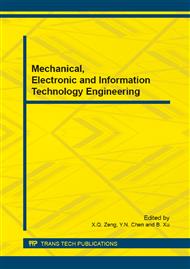p.623
p.629
p.633
p.641
p.646
p.652
p.656
p.660
p.667
An Improved General Regression Neural Network for Prediction Based on Small Samples Data
Abstract:
This paper proposed an improved General Regression Neural Network (GRNN) for prediction based on small samples data by adding the procedure of filtrating the input variables, since the training of original GRNN relies too heavily on data samples and is lack of the relevant process to deal with the errors, while the measurement error and sample error from a plenty of input and output variables in small samples data cannot be easily recognized, but could obviously influence the effect of the training. All the input variables were divided into critical factors and non-critical factors by the impact degree of every input variable, in accordance with the result of the partial correlation analysis on the experimental data. The critical factors were considered as the input of the GRNN model while the non-critical factors were removed to eliminate the error. To verify the performance of the proposed approach, a test on the case of residual stress prediction based on fourteen groups of experimental data was taken as an example application. The improved method could not only avoid the limit to the orthogonality and the quantity of the experiments in traditional method of residual stress prediction, but also get prediction results with smaller error, compared with the original GRNN method. The results have shown that the improved GRNN outperformed the original algorithm with average 4.1% lower prediction error in 92% of the tested cases. And in the rest 8% of tested cases, the prediction error of the improved GRNN was only 0.24% higher than the original one’s.
Info:
Periodical:
Pages:
646-651
Citation:
Online since:
March 2015
Authors:
Price:
Сopyright:
© 2015 Trans Tech Publications Ltd. All Rights Reserved
Share:
Citation:


